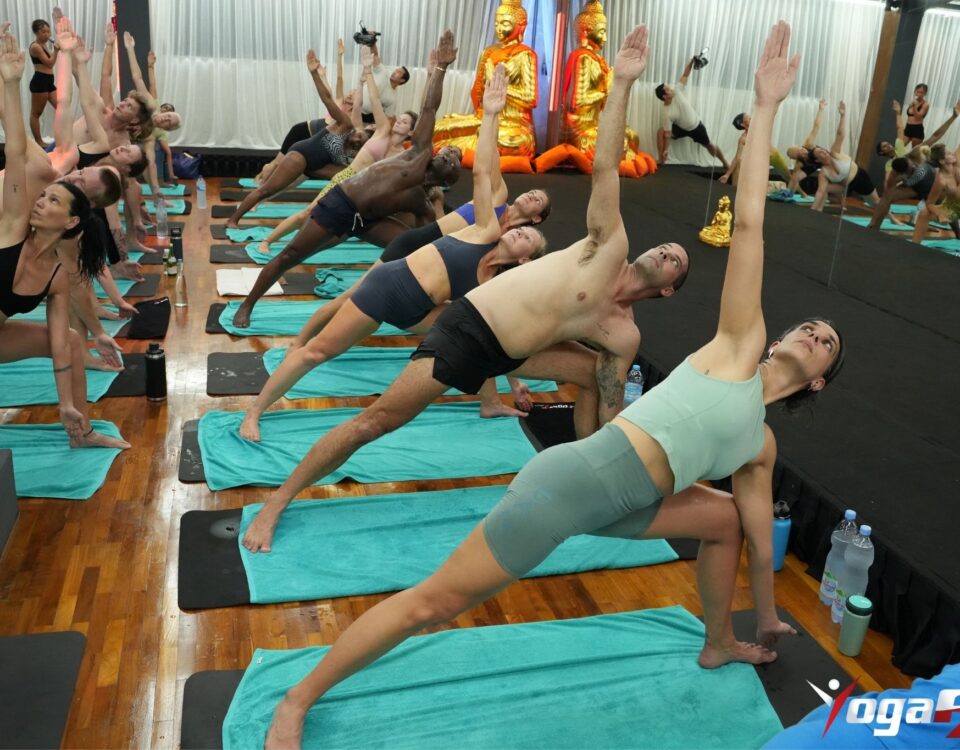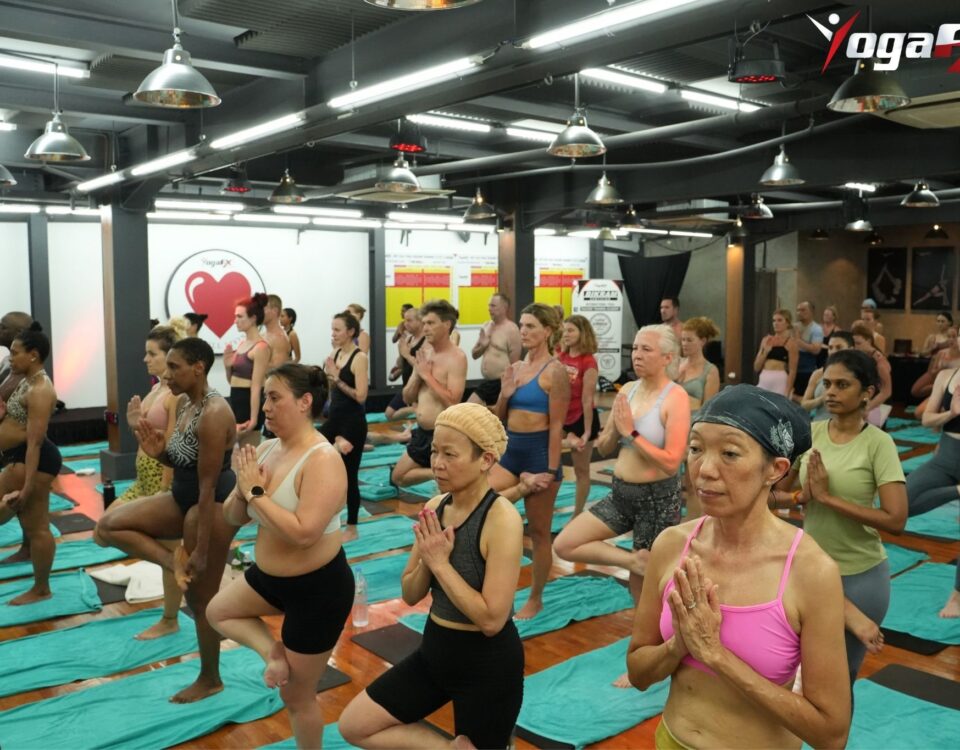
Yoga is more than just a series of poses; it’s a journey that brings balance to the body, mind, and soul. For those passionate about sharing the profound benefits of yoga with others, the first step is to get certified to teach yoga.
Certification provides you with the necessary knowledge, skills, and credibility to guide students safely through their practice, creating an experience that is both empowering and transformative.
In this guide, we’ll explore why certification matters, how to get certified, the core skills you’ll develop, daily responsibilities, career opportunities, and the impact this path can have on both you and your students.
Why You Need to Get Certified to Teach Yoga
Teaching yoga is not only about performing poses but also about cultivating a deep understanding of the principles, safety, and structure required to lead others. Here’s why getting certified is an essential step for anyone aiming to teach yoga professionally:
Building Credibility and Trust
When you get certified to teach yoga, you gain a formal recognition of your competence, which adds to your credibility as an instructor. Students and studio managers seek instructors who have proven their commitment through a structured training program. A certified yoga teacher is seen as someone who takes the practice seriously, creating a trusting environment where students feel safe and supported.
Enhancing Student Safety and Experience
Yoga involves both physical and mental work, and without proper training, there’s a risk of injury or ineffective practice. Certification programs focus on body mechanics, alignment, and adjustments, equipping you with the skills to lead students through poses in ways that maximize safety and effectiveness. Certified teachers can confidently modify poses to suit students of all levels, ensuring each student can participate safely and enjoyably.
Global Recognition with Yoga Alliance
One of the most widely recognized certifications is provided by Yoga Alliance, an organization that sets the industry standard for yoga teacher training worldwide. A Yoga Alliance certification offers global recognition, allowing you to teach confidently in studios, gyms, wellness centers, and even internationally. This level of respect and credibility helps you access more diverse opportunities as a yoga teacher.
How to Get Certified to Teach Yoga
The journey to becoming a certified yoga instructor involves dedicated study, hands-on practice, and continuous learning. Below is a step-by-step guide to help you understand the certification process and what it entails.
Step 1: Choose a Registered Yoga School (RYS)
To get certified, you must start with a training program from a Registered Yoga School (RYS), preferably one accredited by Yoga Alliance. Yoga Alliance sets high standards for yoga education, and each RYS must follow a set curriculum that covers anatomy, teaching techniques, yoga philosophy, and more. Selecting an accredited school gives you the confidence that your education meets industry standards and prepares you to teach effectively.
Step 2: Complete a 200-Hour Training Program
The 200-hour program is the standard entry-level certification for most yoga instructors. This program includes modules on the history and philosophy of yoga, teaching methodologies, anatomy, and asana (posture) practice. Completing the 200-hour course provides you with a solid foundation in both the theory and practice of yoga, preparing you to lead classes with confidence and professionalism.
Step 3: Register with Yoga Alliance
Upon completing your training, you can apply for registration as a Registered Yoga Teacher (RYT) with Yoga Alliance. This registration is not mandatory but is highly recommended, as it provides a mark of credibility and global recognition. Being a registered member also grants access to continued education resources, professional networking, and updates on the latest research and trends in yoga.
Step 4: Pursue Advanced Training Opportunities
Many instructors choose to continue their education with advanced certifications, such as the 300-hour or 500-hour programs, to deepen their practice and expand their teaching skills. These programs allow you to specialize in certain styles of yoga, learn advanced techniques, or even prepare for roles in yoga teacher training. Advanced training enhances your skills and opens doors to more specialized teaching roles.
Skills You’ll Gain When You Get Certified to Teach Yoga
Becoming a certified yoga instructor involves more than learning poses; it’s about developing a wide range of skills that empower you to guide others effectively.
Teaching and Communication Skills
A successful yoga class requires clear communication, as you need to provide instructions that students can easily understand and follow. Certification programs train you to cue poses, breath work, and transitions effectively. They also emphasize the importance of body language and tone of voice, enabling you to create a calm and welcoming environment that supports your students’ journey.
Knowledge of Anatomy and Alignment
Understanding anatomy is essential for a yoga teacher. Certification programs cover the basics of human anatomy and how different poses affect various body systems. This knowledge helps you guide students safely, ensuring they perform each posture with proper alignment, which can prevent injuries and enhance the physical benefits of the practice.
Compassion, Empathy, and Adaptability
Yoga is a deeply personal practice, and students come from all walks of life with unique needs and goals. A good yoga instructor understands the importance of compassion and patience. Certification programs teach you to adapt your teaching style to meet the needs of individual students, offering modifications, encouragement, and support as needed.
Leadership and Class Management
Leading a yoga class requires a blend of assertiveness and calmness. As a certified instructor, you’ll learn how to manage class flow, time transitions smoothly, and handle unexpected situations gracefully. These leadership skills are essential in creating a structured yet relaxing experience for your students.
What You’ll Do as a Certified Yoga Instructor
A certified yoga instructor’s role is both varied and rewarding. Here are some of the main tasks and responsibilities you’ll handle daily:
Designing and Planning Class Sequences
Planning each class requires thoughtfulness and creativity. You’ll design sequences that flow naturally and incorporate a balance of warm-up, peak poses, and relaxation. As a certified instructor, you’ll know how to adjust these sequences based on the skill levels and needs of your students, ensuring everyone has a fulfilling experience.
Leading Classes with Clear Instructions
During the class, you’ll guide students through each pose, offering cues on alignment, breath, and mindfulness. You’ll demonstrate postures when necessary, provide verbal and physical adjustments, and encourage students to focus on their breath and mind-body connection.
Offering Modifications and Adjustments
Not every student can perform every pose, so it’s important to offer modifications that make poses accessible for everyone. Certification programs teach you how to provide hands-on adjustments and modifications that meet each student’s unique needs, creating an inclusive environment where everyone can practice safely.
Cultivating a Positive and Supportive Atmosphere
As a yoga instructor, you’re responsible for creating a welcoming environment where students feel comfortable exploring their practice. This positive atmosphere helps students relax, connect with themselves, and fully engage in their practice.
Career Paths After You Get Certified to Teach Yoga
Certification opens up a range of career paths, allowing you to pursue different teaching roles and specializations based on your interests and goals.
Teaching in Studios, Gyms, and Wellness Centers
Most certified yoga instructors begin their careers by teaching at yoga studios, gyms, or wellness centers. These venues provide a stable teaching environment with consistent classes and a supportive community. Working at a studio or gym allows you to build a loyal student base, gain valuable teaching experience, and refine your skills.
Freelance and Private Instruction
Many certified instructors offer private lessons, allowing them to work one-on-one with students. This path provides flexibility and the opportunity to tailor sessions specifically to the needs and goals of each student. Freelance instructors may also teach small-group sessions, run workshops, or offer classes at various locations, from parks to corporate settings.
Corporate Wellness Programs
With the growing focus on employee wellness, many corporations now include yoga as part of their health initiatives. Certified instructors can find opportunities teaching yoga in workplaces, helping employees reduce stress and improve their physical well-being. Corporate wellness programs are a great way to expand your teaching practice beyond the studio environment.
Hosting Workshops and Retreats
Some instructors choose to host workshops or retreats, which offer more immersive teaching experiences. Workshops focus on specific themes, such as meditation, posture alignment, or mindfulness, allowing instructors to go in-depth on particular aspects of yoga. Retreats, on the other hand, provide extended practice and are often held in serene locations, offering participants a deeper connection to their practice.
Specializing in a Specific Style of Yoga
After gaining experience, some instructors choose to specialize in a particular style, such as Vinyasa, Bikram, or Restorative Yoga. Specialization adds value to your practice and can increase your appeal to students seeking expertise in specific areas.
Finding Opportunities After You Get Certified to Teach Yoga
Once you’re certified, there are various avenues to explore for gaining teaching experience and building your career:
Studio and Wellness Center Jobs
Yoga studios and wellness centers often hire certified instructors for regular classes, workshops, and special events. Teaching at a studio helps you gain experience, refine your teaching style, and build a following.
Online Teaching Platforms
The rise of online learning platforms has created new opportunities for certified instructors. You can teach virtual classes through platforms like Zoom or offer classes on dedicated yoga apps, allowing you to connect with a global student base.
Apprenticeships and Continuing Education
Apprenticeships with experienced instructors offer hands-on learning opportunities, allowing you to learn advanced techniques and refine your skills. Additionally, continuing education courses allow you to explore specialized areas, such as prenatal yoga, advanced anatomy, or the business side of yoga.
Building a Private Clientele
Many certified instructors create a client base through private lessons. Teaching private sessions offers the flexibility to design custom practices and can be a lucrative path for experienced instructors.
Conclusion: Why You Should Get Certified to Teach Yoga
When you choose to get certified to teach yoga, you’re embarking on a journey that is as rewarding for you as it is for your future students. With certification, you’ll gain the confidence and skills to lead meaningful, effective classes that support students’ growth in body and mind.
Whether you aspire to teach locally, work in corporate wellness, or lead international retreats, a certification opens doors to a fulfilling career. Embrace this path with dedication and passion, and you’ll find yourself at the heart of a growing, global community that values well-being, connection, and growth through the practice of yoga.


